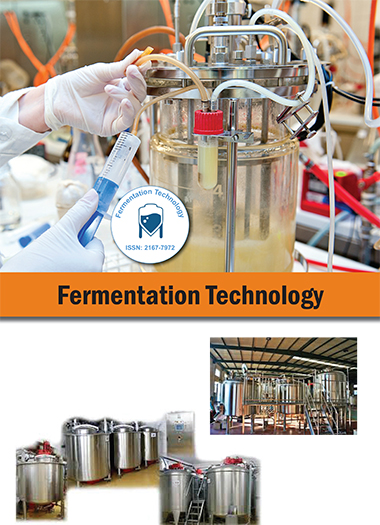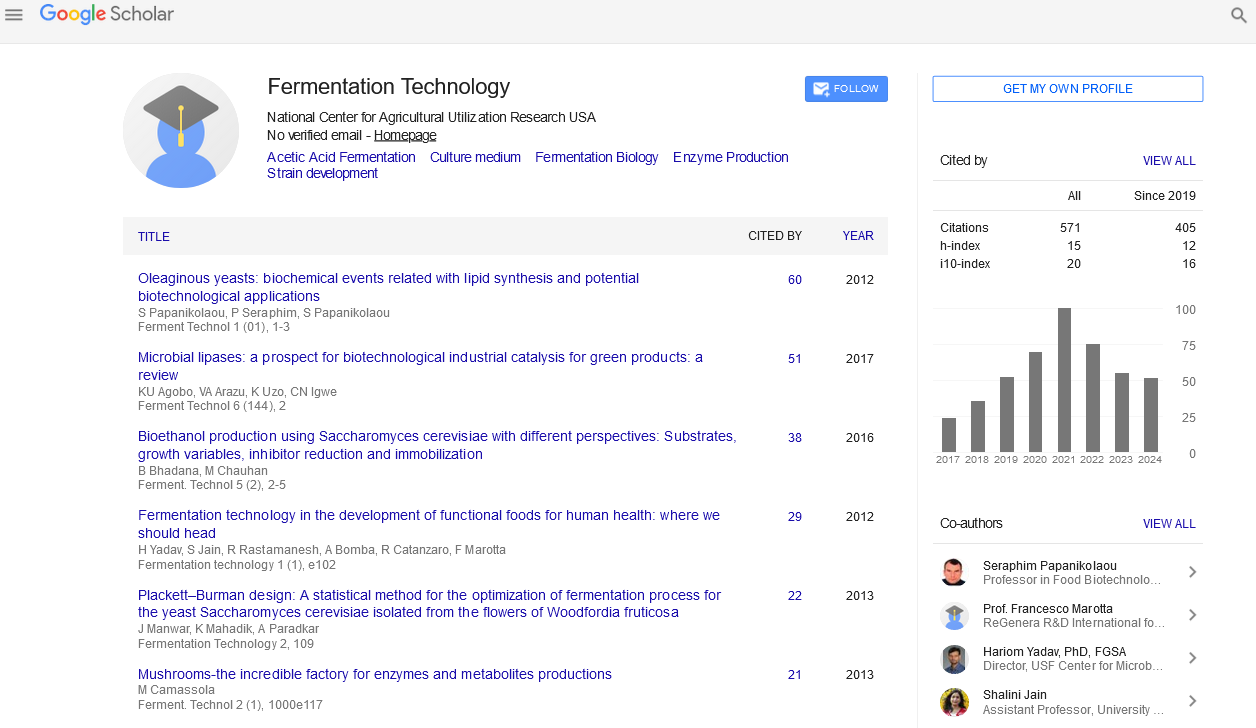Indexed In
- Open J Gate
- Genamics JournalSeek
- Access to Global Online Research in Agriculture (AGORA)
- RefSeek
- Hamdard University
- EBSCO A-Z
- OCLC- WorldCat
- Publons
Useful Links
Share This Page
Journal Flyer

Open Access Journals
- Agri and Aquaculture
- Biochemistry
- Bioinformatics & Systems Biology
- Business & Management
- Chemistry
- Clinical Sciences
- Engineering
- Food & Nutrition
- General Science
- Genetics & Molecular Biology
- Immunology & Microbiology
- Medical Sciences
- Neuroscience & Psychology
- Nursing & Health Care
- Pharmaceutical Sciences
Commentary - (2022) Volume 11, Issue 1
Lactobacillus Function in Fermentation of Milk
Della Gray*Received: 07-Nov-2022, Manuscript No. FMT-22-18926; Editor assigned: 09-Nov-2022, Pre QC No. FMT-22-18926 (PQ); Reviewed: 25-Nov-2022, QC No. FMT-22-18926; Revised: 01-Dec-2022, Manuscript No. FMT-22-18926 (R); Published: 08-Dec-2022, DOI: 10.4172/2167-7972.22.11.156
Description
Lactic acid bacteria species have been used extensively in food fermentation all around the world as potential microorganisms. The fermentation of milk has been dependent on lactic activity, which enabled the production of high-quality fermented milk products from milk. Lactic acid can be present in milk fermentation either naturally or through starter cultures that have been injected. They are both interesting cultures to investigate for the production of fermented milk. Lactic acid, which is vital as preservatives and for giving items their flavor, is produced when milk is fermented. Exo polysaccharides, which are crucial for texture creation, are also produced by them. Given the numerous studies on their health-promoting effects and their largely accepted safety rating of lactate, they can be frequently employed in the creation of fresh fermented milk products. Numerous genus of the lactobacillaceae family contain species of lactic acid bacteria. Due to their well-known position as generally acknowledged as safe microorganisms, they represent prospective microbes and have been utilized in food fermentation on a global scale. They are also known for having the ability to ferment foods, which increases food safety, improves organoleptic qualities, enriches nutrients and increases health benefits. According to the raw material used, fermentation using lactic acid can be divided into two groups: non-dairy fermentation and dairy fermentation. Fermentation is typically regarded as a safe and appropriate method of food preservation. Dairy fermentation can be used to create a variety of products using milk from various mammalian species. Several items can be made using dairy fermentation and milk from various mammalian species. The most common raw materials for the production of specific financial value fermenting milk products globally are cow's milk, followed by goat's milk and sheep's milk. Due to the very perishable nature of milk, the main goal of milk fermentation employing lactic is to retain the nutritional value of milk while also extending its shelf life. It is also acknowledged that utilizing lactic to ferment milk would unquestionably result in high-quality products with highly valued organoleptic properties. In fermented milk products, lactic starters have a few key traits. When compared to goods that underwent natural fermentation, a single possible starter culture will predominate and diminish the diversity of bacteria in fermented milk products.
Based on their characteristics that promote the evolution of fermented milk products, Milk and items made from fermented milk are good growth substrates for the bacteria that might cause spoiling. The capacity of lactic bacteria to create acid, which then demonstrates antibacterial activity, is one of their most wellknown traits associated to preservation properties. The milk is shielded against disease growth and spoiling germs by acidification. Antimicrobials, often known as antimicrobial metabolites, are released by lactose. Both acids and antimicrobials, which are regarded as safe natural preservatives, have a significant deal of potential for application in food preservation. Nonstarter lactic has a significant function in the maturation of cheese. Nonstarter lactic has a significant function in the maturation of cheese. Nonstarter lactic fermentation releases enzymes that are fundamental to the process of turning curd into cheese. It is advised that a selection of strains be made in order to maintain a particular cheese flavor because the number of nonstarters lactic is out of control. Traditional cheeses' taste intensity comes from a non-starter as well. The increased demand for fermented dairy products is a result of the positive health effects they produce when consumed. L. Helveticas hydrolyzes casein in milk to form bioactive peptides that have antihypertensive, immune modulatory, anti-cancer and calcium binding properties. One lactic acid known as L. Helveticas possesses an effective photolytic mechanism. According to reports, lactobacilli are among the top mentioned organisms as species employed in probiotic production and are one of the methods through which fermenting milk products are said to benefit human health.
Citation: Gray D (2022) Lactobacillus Function in Fermentation of Milk. Ferment Technol. 11:156.
Copyright: © 2022 Gray D. This is an open-access article distributed under the terms of the Creative Commons Attribution License, which permits unrestricted use, distribution, and reproduction in any medium, provided the original author and source are credited.

